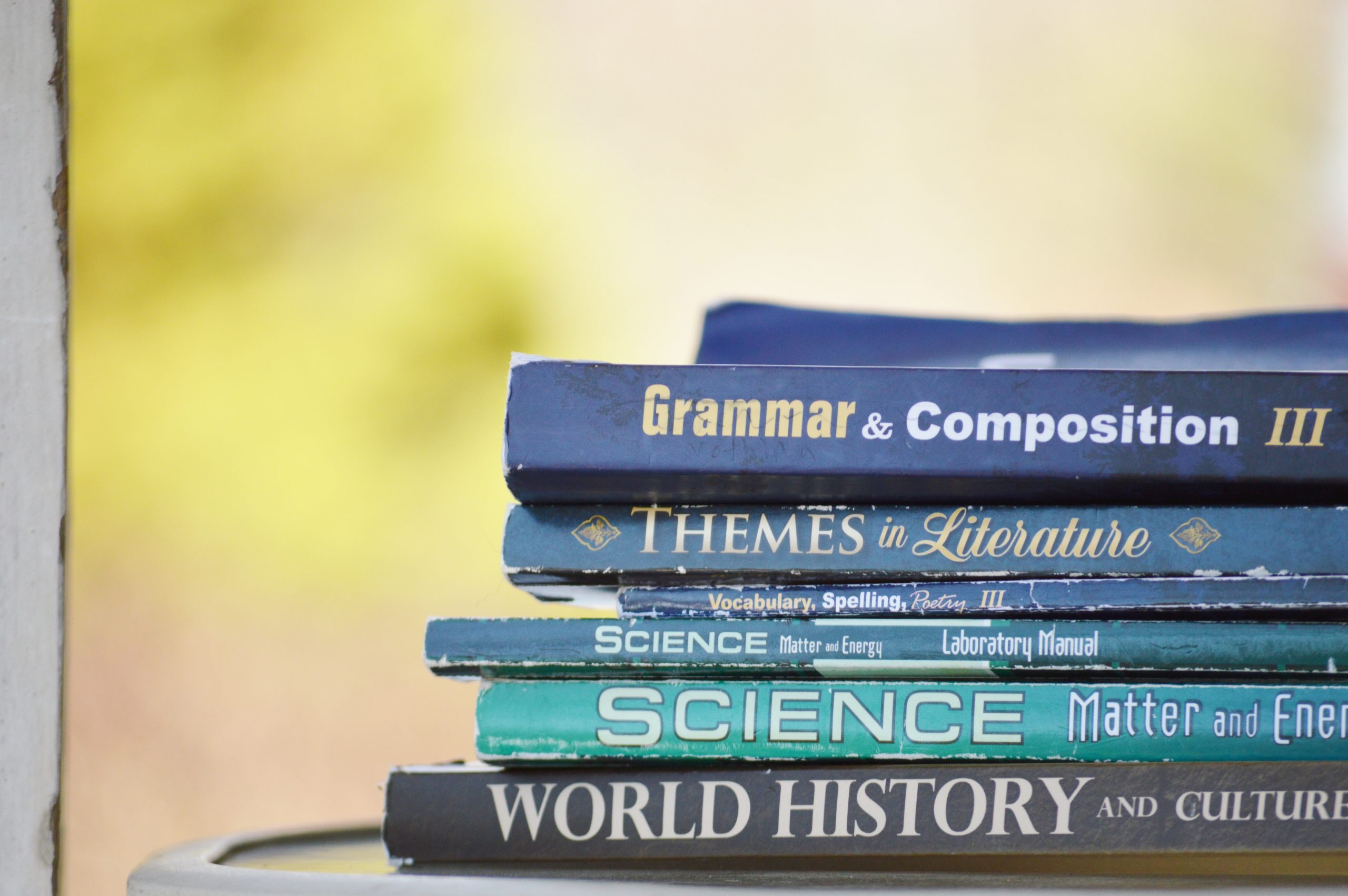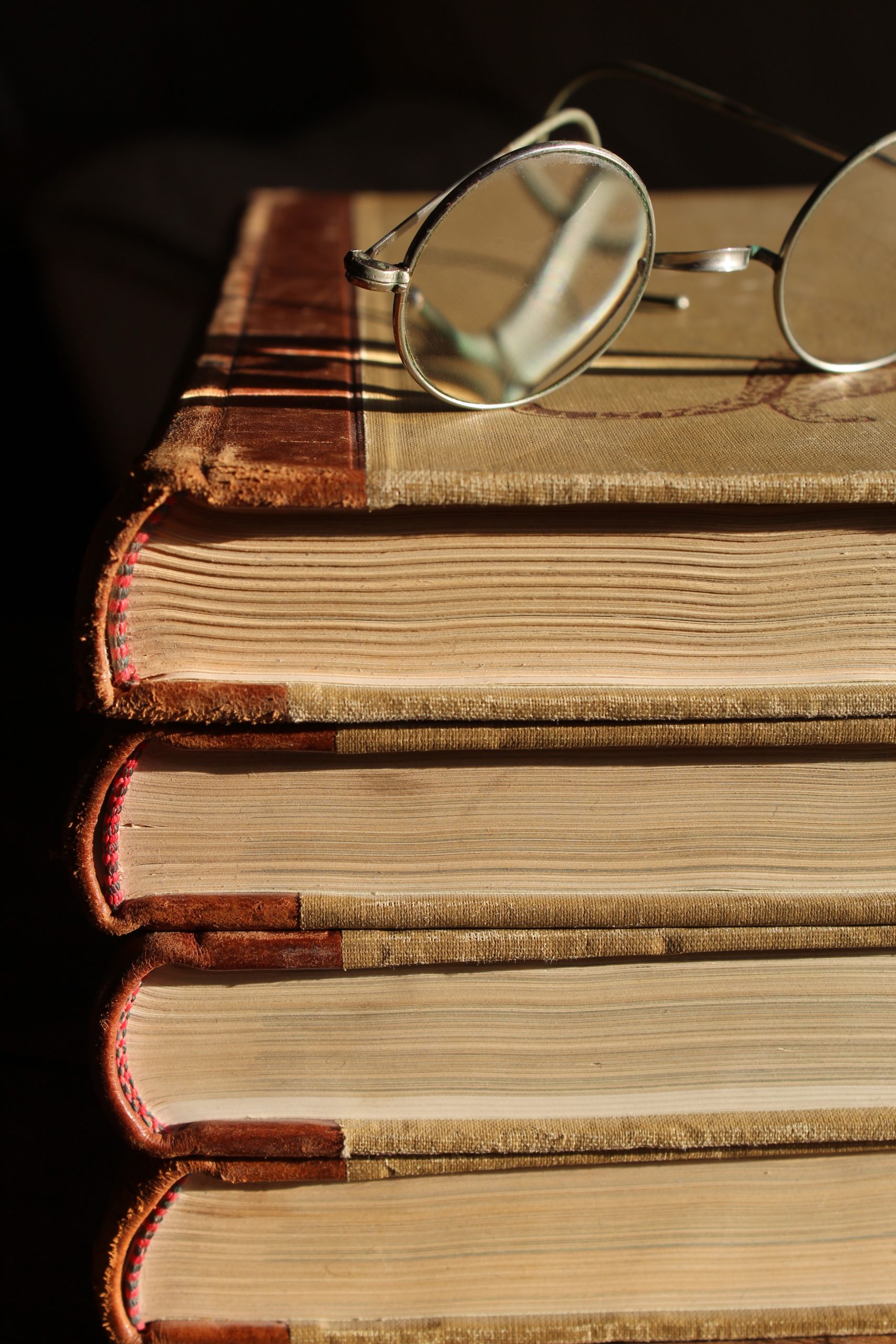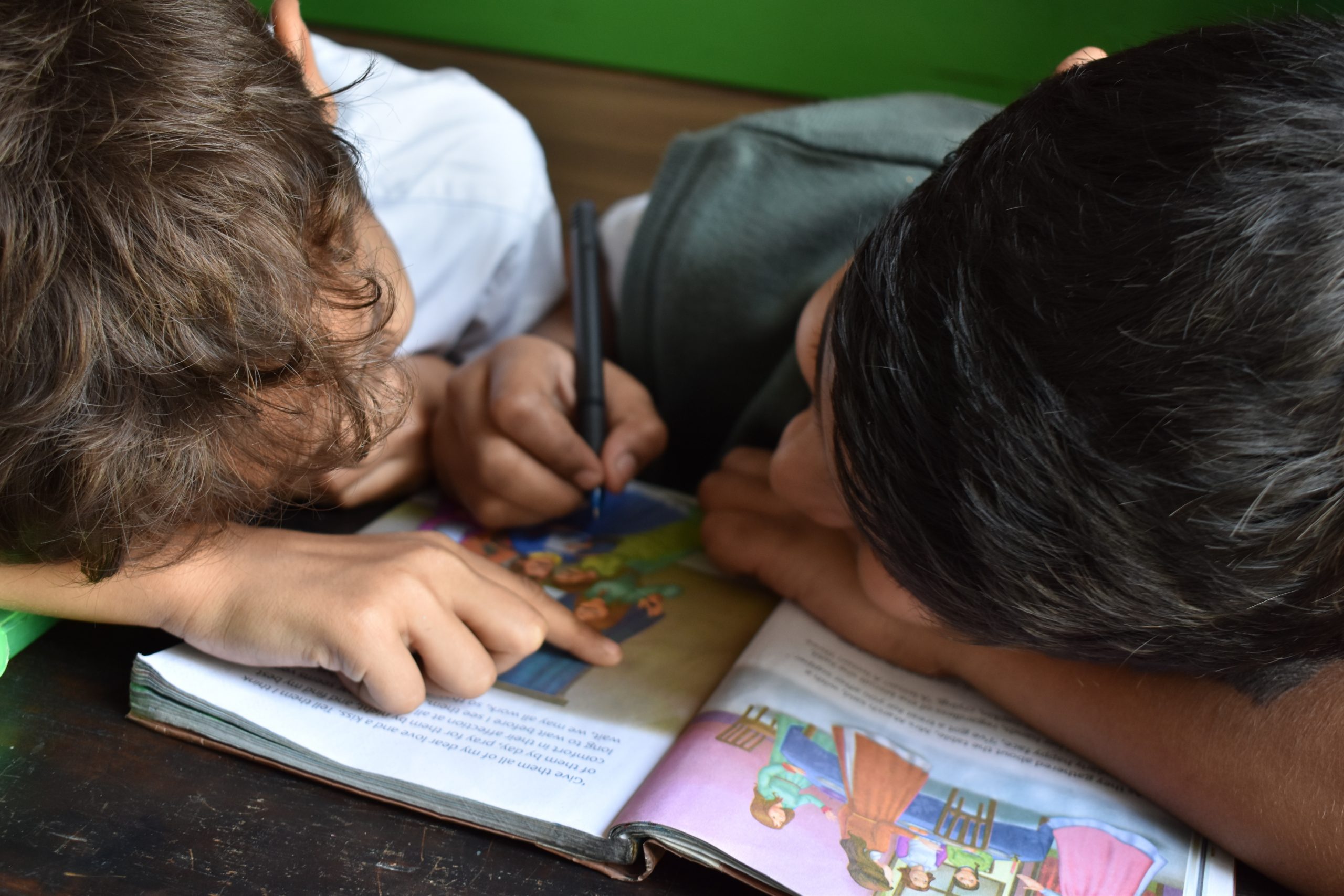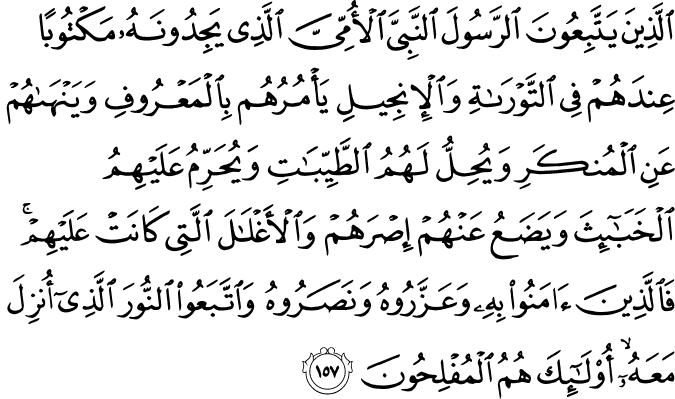#Islam
Rethinking How We Teach The Topic Of Sīrah In K-12 Settings
Published
By
Naved Bakali
Introduction
The biography of the Prophet Muhammad ﷺ serves as a foundational aspect of belief, creed, and the spiritual life of Muslims.1Some insights and analyses from this article draw from my work: Bakali, N. (2021). Seerah (Prophetic history): Curriculum reality and ideals. In N. Memon, M. Alhashmi, & M. Abdalla, Curriculum renewal for Islamic education: Critical perspectives on teaching Islam in primary and secondary schools (pp. 63-76). London: Routledge. This point was eloquently emphasized in the Prophet’s 
In other words, according to Muslim belief, true devotion to God can only be achieved through following the example of the Prophet ﷺ. It can be inferred from these examples that the study of the life and example of the Prophet Muhammad ﷺ is an essential discipline in any type of formal Islamic educational curriculum. Learning about the life of the Prophet ﷺ can broadly be approached through: the science of hadith, which are comprised of the Prophet’s 
The focus of this article is to examine the sīrah as an Islamic academic discipline for K-12 curricula in Western contexts. The purpose is to provide educators with a sense of why the sīrah is an essential discipline, the sources it is derived from, and how it has been approached through various Islamic educational curricula, specifically examining the ‘I love Islam’ educational series.5Recently the series has been rebranded as ‘My Islamic Books’, however they are still being published as ‘I Love Islam’. The reason it may be useful to examine this particular curriculum is because the ‘I love Islam’ program is regularly employed in North American Islamic educational settings, as well as various international contexts around the world. As such, critical analysis of this curriculum is useful for both domestic North American educators, as well as educators in different nations who employ this curriculum. The ‘I love Islam’ series discusses the topic of sīrah through a chronological approach exploring events in the life of the Prophet ﷺ in a linear fashion. In addition to examining this curriculum’s teaching of the sīrah, this article will also examine how the topic of sīrah has been assessed and evaluated using the The Islamic Studies Standardized Tests (ISST) standard, to better understand the learning outcomes and objectives of learning the sīrah through various Islamic educational curricula. This article concludes by discussing possible ways forward in the teaching of this discipline. I now turn to discuss why sīrah has been and continues to be studied by Muslims all around the world and its traditional sources.
The Importance of sīrah in an Islamic Educational Curriculum and its Traditional Sources
Definition

Keep supporting MuslimMatters for the sake of Allah
Alhamdulillah, we're at over 850 supporters. Help us get to 900 supporters this month. All it takes is a small gift from a reader like you to keep us going, for just $2 / month.
The Prophet (SAW) has taught us the best of deeds are those that done consistently, even if they are small. Click here to support MuslimMatters with a monthly donation of $2 per month. Set it and collect blessings from Allah (swt) for the khayr you're supporting without thinking about it.
PC: Anne Nygard (unsplash)
The term ‘sīrah’ is an Arabic noun. The Arabic language, like other Semitic languages, derives nouns from a triliteral root system. ‘Sīrah’ is a noun derived from the root saara (sa-ya-ra), which is a verb that denotes to move along, traverse, to travel, or to journey.6Cowan, J. M., (1994), The Hans Wehr dictionary of modern written Arabic, 4th edition. Otto Harrassowitz. The term ‘sīrah’ as an indefinite noun takes on the meaning of ‘way of walking; march; way of acting, conduct; life…course of life; biography’.7Ibid, p. 522. When the definite article of ‘Al-‘ is attached to the term ‘sīrah’ it refers specifically to the biography of the Prophet Muhammad ﷺ. From the etymological roots of the term ‘sīrah’, one can infer that the reason ‘sīrah’ is derived from the root saara is because by learning about a person’s life, one is essentially traveling along that person’s path or journey, or walking in their footsteps. It is for this reason that the ‘sīrah’ of the Prophet Muhammad ﷺ, as an academic discipline, holds such high and honorable esteem in the lives of Muslims. For the purposes of this article, reference to the term ‘sīrah’, without the use of the definite article ‘Al’, will also denote the biography, life, and way of the Prophet ﷺ. To begin, we will first briefly describe why the sīrah was formalized into an academic discipline among the various Islamic sciences and why the topic of the sīrah commonly forms a foundational subject in most contemporary Islamic educational curricula.
Sources of sīrah
The two primary sources of knowledge in Islam are the Quran and sunnah (example of the Prophet Muhammad ﷺ).8Ramadan, T., (2017), Introduction to Islam. Oxford University Press. The authority of the Prophet ﷺ comes second only to the Quran, as implied in the verse “And obey God and the Messenger, that haply you may receive mercy” [3:132].9Nasr, S. A., et al., (2015), The study Quran: A new translation and commentary, p. 166. Harper Collins
The primacy of the Prophet’s 
There are numerous instances in the Quran where Muslims are commanded to follow the example and conduct of the Prophet Muhammad ﷺ. In addition to verse 31, chapter 3 mentioned above, other places in the Quran reiterate the same message. Chapter 33 (Surah Al-Ahzab), verse 21 states: “Indeed, you have in the Messenger of God a beautiful example for those who hope for God and the Last Day, and remember God much.”11Ibid, p. 1025
Muslims have interpreted this verse in various ways, however; the general import of this verse implies that Muslims can learn from the example of the Prophet Muhammad ﷺ in various spheres and aspects of their lives. For example, the Prophet ﷺ was a spouse; through his example, Muslims can learn how to behave with their spouses. The Prophet ﷺ was also a statesman, a military commander, a father, a son, and a businessman. These are all domains that Muslims can learn from the Prophet’s 
The other primary reason the sīrah holds such a high and important position in contemporary Islamic educational curricula is because it helps Muslims understand the Quran in its proper context. As the Quran states in chapter 16 (Surah An-Nahl), verse 44: “And We have sent down the Reminder (i.e. the Quran) unto thee (the Prophet) that thou mightest clarify for mankind that which has been sent down unto them, that haply they may reflect”.12Ibid, pp. 667-668.
As such, the Prophet ﷺ is an expounder of the Quran. Some of the verses of the Quran hold clear, literal meanings that can be interpreted outside of a specific context. However, many verses of the Quran were revealed for specific purposes over the span of 23 years of revelation and have a specific application or meaning tied to them.13Ibid, General Introduction. As such, studying the sirah can help contextualize some verses of the Quran, giving the reader a deeper understanding of these verses.
The Sunnah of the Prophet ﷺ is explained through hadith. Hadith literature encompasses a number of volumes and compilations by various authors from approximately the 9th century CE onwards. Analysis of hadith is an expansive Islamic discipline, which ranks the various sayings of the Prophet ﷺ from rigorously authenticated to fabricated. The most renowned of these books, referred to as al-Sihah al-Sittah (The Authentic Six), are the collections of Sahih Bukhari, Sahih Muslim, Sunan Abu Dawud, Jami al-Tirmidhi, Sunan al-Sughra al-Nisaa’I, and Sunan ibn Majah.14Siddiqi, M. (1996), Hadith literature: Its origin, development, and special features. Islamic Texts Society. By studying the biography of the Prophet Muhammad ﷺ, Muslims are able to better understand the specific rulings, as well as acquire a more nuanced and deeper understanding of the verses and stories outlined in the Quran and hadith literature.
This point is particularly relevant when, for example, discussing the infamous ‘verse of the sword’ [chapter 9 (Surah At-Tawbah), verse 5], in which part of the verse states: “slay the idolaters wheresoever you find them, capture them, besiege them, and lie in wait for them at every place of ambush.”15Nasr, S. A., et al., (2015), The study Quran: A new translation and commentary, p. 506. Harper Collins. By reading this verse holistically, within the context of its revelation, and through the lens of the sīrah, it is quite obvious and clear that this verse is describing a specific circumstance and does not hold a general application. As such, through the study of the sīrah, there is greater potential for the Quran and hadith literature to be understood more fully and in a historical context. As is clear from the above discussion, sīrah is an important Islamic discipline that forms an essential component in an Islamic educational curriculum. There are several foundational sources of the sīrah that help us understand how this discipline developed and has evolved over the years.
The sīrah is an academic discipline that historically has been derived from several sources. Two important sources are the Quran and hadith literature. Both provide details of instances and stories of the Prophet Muhammad’s 








Beyond the Quran and hadith literature, the main sources of sīrah are books specifically devoted to documenting the biography of the Prophet Muhammad ﷺ. These sources began to emerge in the generation after the companions of the Prophet. Some chroniclers were the sons of companions of the Prophet Muhammad ﷺ. The most famous of these was ‘Urwa ibn Zubair (d.713 CE), who was the son of the famous companion Zubair ibn Awwam (d.656 CE), as well as the nephew of the famous wife of the Prophet ﷺ, Aisha bint Abi Bakr 
To this day, ibn Hisham’s work on the sīrah is considered to be one of the most important sources of sīrah. However, there have been some important contemporary sīrah volumes, which fall under the ‘Sahih Al-sīrah’, or authenticated sīrahliterature. These include the works Sahih al-sīrah al-Nabawwiyya by Ibrahim al-‘Ali (1995), al-sīrah al-Nabawwiyya: ‘Ard waqa’I wa-ahdath by Ali Muhammad Al-Salabi (2008), Ar-Raheeq al-Makhtum: The Sealed Nectar by Safiur Rahman Mubarakpuri, as well as others. It is noteworthy that the sīrah, as an academic discipline, was being organized and codified even before the hadith literature, which took place in the third century of the hijra.19Siddiqi, M. (1996), Hadith literature: Its origin, development, and special features. Islamic Texts Society. This points to the importance the early generation of Muslim scholars gave to the study and documentation of the biography of the Prophet Muhammad ﷺ. It is critical to note here that in these traditional works, there was not as much academic rigor for the authentication of the sīrah, as there was for the compilation of hadith literature. As the hadith literature is one of the most important sources for deriving Islamic law, an entire science of hadith compilation developed to ascertain the veracity of the sayings of the Prophet ﷺ. This level of rigor and authentication is not present in the traditional compilations of sīrah, as it is not considered a source for deriving Islamic law. However, several more contemporary works have been developed to provide a more rigorously authenticated narrative of the Prophet Muhammad’s 
Having described why the study of the sīrah is essential for Muslims and its traditional sources, the article now turns to discuss how the topic of sīrah has been taught through 1-12 Islamic educational curricula in Western contexts.
Analysis of Islamic Educational Curricula and How it addresses the Topic of the sīrah
The ‘I love Islam’ series

PC: Andrew Ebrahim (unsplash)
‘I love Islam’ is an American-based Islamic curriculum developed by Islamic Services Foundation, based in Dallas, Texas. The ‘I love Islam’ series is an extremely popular Islamic educational curriculum and has been used widely in North America and internationally. The ‘I love Islam’ curriculum covers several essential Islamic themes and topics for grade levels 1 to 12. The topic of sīrah is covered throughout the years 1 to 12 with varying levels of focus at the different grade levels. For the most part, the ‘I love Islam’ series covers the topic of sīrah in a linear fashion throughout the grade levels. As such, major chronological historical events serve as the basis for lessons and topics that are covered in the textbooks. For example, year one of the textbooks begins with basic information about who the Prophet Muhammad ﷺ was, what Muslim beliefs are about him, and other basic biographical information.
The chapter proceeds by describing a linear historical account of the biography of the Prophet Muhammad ﷺ beginning with his birth, parents, lineage, and clan, as well as major events in his life prior to the advent of prophethood, such as the death of his father, his upbringing with his foster mother Halima, and the death of his mother.20Islamic Services Foundation (2012), I love Islam 1, international edition. In addition to basic biographical information, the year one book of ‘I love Islam’ also covers qualities and characteristics about the Prophet ﷺ. In chapter 3 of the first book, entitled ‘Muhammad worked hard’, the chapter touches on Prophet Muhammad’s 
Another issue that becomes obvious when examining the ‘I love Islam’ curriculum is that there is considerable redundancy of topics and themes covered from year to year. For example, years 1 to 3 all cover basic features and characteristics of the Prophet’s 
The topic of sīrah becomes less emphasized in later years of the ‘I love Islam’ curriculum. From year 6 onwards, most of the discussion of the sīrah relates to historical events of the Medinan period, the period after the Prophet Muhammad ﷺmigrated from Makkah to Madinah and become the head of state. Similar to the Makkan period of the sīrah, the Madinan period described in the ‘I love Islam’ curriculum focuses on the retention of factual information such as descriptions of important events, names of key companions of the Prophet ﷺ, and individuals or groups that were allied to the Prophet ﷺ or hostile towards him. Consequently, students are rarely challenged to engage in higher-order thinking processes such as analyzing, synthesizing, and creating original work to demonstrate a deeper conceptual understanding of themes in the sīrah. For example, instead of recalling specific events, such as battles of the Prophet ﷺ and when they occurred, students can explore why these conflicts arose to understand the notion of a just conflict, and how the nature of these conflicts evolved as the conditions of Muslim community evolved. Instead of students being able to recall which Jewish tribes were expelled from Madinah and when, students can analyze what were the overriding benefits of the expulsion of these communities in preserving the interests and safety of the Muslim state in Madinah. These higher-order thinking processes not only develop a deeper understanding and appreciation for the sīrah, but in light of all the attacks and misinformation hurled against Muslims in non-Muslim majority contexts, such understanding can help young Muslims defend and take pride in their faith traditions. Furthermore, engaging in these higher-order thinking processes invites students to think about the sīrah in a more profound and introspective way, which can facilitate making real-life connections with the topic.
Furthermore, this approach to learning the sīrah, in a more thematic way, correlates with how the Quran teaches us about the life of the Prophet ﷺ. The Quran is not a history textbook that simply describes events in chronological order. Rather, the Quran draws on events in a thematic way. This approach enables the reader to derive lessons and insights through a reflective reading of the text. In contrast, most of the discussions of sīrah at the senior levels (grades 9 to 12) of the ‘I love Islam’ curriculum primarily focuses on conflicts and wars fought by the Prophet ﷺ and his companions. Though these battles have important historical significance and are a part of the biography of the Prophet ﷺ, students are unlikely to make meaningful connections to these topics in the current context. As senior students, particularly in Western contexts, grappling with issues of identity, integration, and self-awareness, many other useful themes can be extrapolated from the sīrah to make learning this subject more meaningful to them.
Assessment and Evaluation of Sīrah in Islamic Educational Curricula

PC: Taylor Flowe (unsplash)
In the ‘I love Islam’ educational curriculum there are some basic formative assessments. However, the thrust of these questions are focused on surface-level factual information.23Ibid. For example, the textbooks ask basic questions relating to what the Prophet’s 
The Islamic Studies Standardized Tests (ISST) is a criterion-referenced instrument designed to provide schools with data on primary school students’ ability to master concepts in the fields of Quranic studies; sīrah and hadith; aqidah, fiqh, and akhlaq; and Islamic history.26http://www.isstschools.com/about_isst.html The ISST is an assessment tool derived from various Islamic educational curricula, in consultation with major Islamic education schools, and conforms to the content of Islamic education textbooks including the ‘I love Islam’ series, IQRA’, Good Word, as well as other internationally renowned Islamic education textbooks.27Ibid. It is useful here to describe the standards set out by the ISST for the topic of sīrah, as they are a reflection of the various learning outcomes of the Islamic educational curricula that the ISST draws from. These standards include knowledge and comprehension of the sīrah; respecting the Prophet ﷺ; interpretation of events in one’s own life through the teachings of the Prophet ﷺ; and characteristics of the Prophet ﷺ as the best role model to follow.
Each of these standards has a set of three to six competencies, which are indicators of attainment of the standards. The first standard focuses on surface-level factual information, which typically can be characterized as important events throughout the lifetime of the Prophet Muhammad ﷺ. These include major events like the birth of the Prophet ﷺ, the beginning of his Prophethood, his migration from Makkah to Madinah, the conquest of Makkah, and other important events. The second standard is focused on the devotional or spiritual dimension of studying the biography of the Prophet ﷺ, which should engender a sense of love and respect for the Prophet ﷺ. These first two standards form the basis of any discussion of sīrah, that is knowledge of the basic events, which constitute the historical record of the Prophet’s 
The next two standards of ‘interpretation of events in one’s own life through the teachings of the Prophet’, and ‘characteristics of the Prophet ﷺ as the best role model to follow’ are standards, which attempt to make the study of the sīrah meaningful and relatable to students. It is refreshing to note that these standards reflect how Islamic educational curricula, increasingly, are not only concerned with providing students with basic historical facts about the biography of the Prophet ﷺ and encouraging a sense of love and respect for him. Rather, in addition to this, there is an emphasis to relate the sīrah to lived experiences of students to make this topic meaningful and relevant. Unfortunately, the competencies for these two important standards fall short of enabling students to engage with these standards in a deep and conceptual manner. For example, in grade 2 for the standard ‘interpretation of events in one’s own life through the teachings of the Prophet’ ﷺ, one of the competencies is ‘know the importance of being truthful and honest in one’s own life’. Standards stated in such a way reflect a disconnect between experiential and meaningful implementation and simply restating information at a superficial level of understanding. The emphasis here should be on bringing these values from the sīrah into practice. As such, a better way to formulate the competency would be ‘demonstrates truthfulness and honesty in his dealings with peers’. This reformulation implies ‘knowing’ the importance of truthfulness and honesty, but builds upon and goes a step further, by working towards application in addition to knowing.
Another example of this can be seen in the same standard in a competency at the fifth grade. The competency is stated as ‘Follow the sunnah of praying on time five times a day without being told to do so’. A more meaningful conceptualization of this competency would be, ‘understands the benefits of praying five times a day on time’. This reframing potentially encapsulates the previously mentioned standard, but aims to take it a step further by making it more meaningful. Ultimately, the hope is that if students understand the benefits of praying five times a day, they would be eager to observe the prayers on time, without being told to do so. When examining the standard of ‘characteristics of the Prophet ﷺ as the best role model to follow’, we can note a similar pattern of competencies that are abstract in nature and not conceptualized to promote meaningful engagement with the topic. At the grade six level, one of the competencies for this standard is: ‘investigate the Prophet’s relations with non-Muslim neighbors and community members’. There is potential to go beyond the notion of investigating. Here, a more meaningful engagement that inculcates ‘investigating’ and goes a step further with the content would be “promoting positive interactions with community members by drawing from examples from the sirah”. Here, students will be ‘investigating’ how this was achieved through the example of the Prophet ﷺ and see the potential of enacting similar practices in their own lives.
Conclusion: Possible Ways Forward in the Teaching of the Sīrah
The teaching of sīrah forms a foundational component of Islamic educational curricula around the world. The implementation of Islamic educational curricula in the present context poses several challenges. Among these challenges is that students may find Islamic educational curricula to be repetitive, disengaging, biased, irrelevant to their lives, and decontextualized.28Abdalla, M. ‘Islamic studies in Islamic schools: Evidence-based renewal’ in Mohamad Abdalla, Dylan Chowand Muhammad Abdalla (eds), Islamic Schooling in the West (Palgrave, 2018) 257-283. There are some indications in our analysis of the ‘I love Islam’ curriculum, as well as the ISST assessment tool, that important themes are discussed. However, the topics, approaches, and assessments addressed in these mediums are repetitive, lack relevance, and fail to engage students in deep intellectual and conceptual rigor.
For the teaching of sīrah to be effective, curriculum designers need to engage in a thematic approach that goes beyond a linear narrative of the subject. The chronology of the sīrah is important and should be taught. However, educators in addition to teaching the chronology of the sīrah need to emphasize the critical themes of the sīrah that students can learn from, engage in higher-order thinking tasks with, and can work towards the affective domain through the transfer of learning to find practical and meaningful applications, in their lives and other contemporary situations and scenarios. The problem with limiting the discussion of sīrah through a linear approach is that it runs the risk of becoming repetitive and by the later grade levels, most of the discussion of sīrah revolves around state building and military conflicts, which have very little relevance to middle school and secondary aged students. As such, linear approaches to the teaching of sīrah may not always be developmentally appropriate. The underlying assumption of a linear approach is that the cognitive abilities of students are constant across developmental phases. By engaging in a thematic approach to the sīrah, important and relevant issues can be discussed at the various grade levels, taking into consideration the age appropriateness of the content and cognitive maturity and abilities of students.
For example, the notion of civic engagement and community service, a topic relevant to elementary and middle school children, can be discussed through the theme of the charter of Madinah that established rules, regulations, and the preservation of minority rights in Madinan society. Chronologically speaking, this event took place at a later point in the sīrah, however by employing a thematic approach this topic can be discussed at a point that has meaning and relevance to students. Furthermore, senior high school students in a Western context, who may be struggling with issues relating to their identity and place in society as a marginalized minority group, could perhaps learn about the experiences of the early Muslim community that was established in Abyssinia during the Makkan period, as this was a point in the sīrah where Muslims occupied a minority status in a non-Muslim majority governed state. This theme is rarely addressed in sīrahdiscussions within Islamic educational curricula, however; it is a discussion that can be relevant and meaningful for students who occupy minority community status in non-Muslim majority nations. This theme reinforces the notion that Muslims can occupy a minority status in a community and can meaningfully be involved in that society. Furthermore, assessments on the theme of sīrah need to foster and develop deeper and conceptual understandings of the sīrah to make meaningful and real-life connections, instead of focusing on the memorization of factual, surface-level information like the dates of important events and the names of important figures, which current Islamic educational curricula are replete with.
The sīrah is an immensely important topic for Muslims and fundamental for an Islamic educational curriculum. Further research is needed to assess the quality and effectiveness of Islamic educational curricula and assessment in addressing the topic of sīrah. The insights from this article suggest a thematic approach and a shift in focus toward a conceptual understanding of the sīrah to make the topic more relevant and engaging for students. Such an approach draws similarities to the Quranic methodology of discussing the Prophet’s 
Related:
– Reconstructing Our Understanding of the Sīrah – MuslimMatters.org
Keep supporting MuslimMatters for the sake of Allah
Alhamdulillah, we're at over 850 supporters. Help us get to 900 supporters this month. All it takes is a small gift from a reader like you to keep us going, for just $2 / month.
The Prophet (SAW) has taught us the best of deeds are those that done consistently, even if they are small. Click here to support MuslimMatters with a monthly donation of $2 per month. Set it and collect blessings from Allah (swt) for the khayr you're supporting without thinking about it.
Naved Bakali is an Assistant Professor of Anti-Racism Education at the University of Windsor, as well as a Senior Research Fellow with Yaqeen Institute for Islamic Research. He completed his PhD from McGill University, Montreal, in Cultural and International Studies in Education. He is the author of Islamophobia: Understanding anti-Muslim racism through the lived experiences of Muslim youth (Brill/Sense 2016) and co-editor of two edited volumes: Teacher training and education in the GCC: Unpacking the complexities and challenges of internationalizing educational contexts (Lexington Books 2021) and The rise of global Islamophobia in the War on Terror: Coloniality, race, and Islam (Manchester University Press 2022).


Restoring Balance In An Individualized Society: The Islamic Perspective on Parent-Child Relationships

The Limits Of Obedience In Marriage: A Hanafi Legal Perspective

Kuwait Strips Prominent Thinker Tariq Suwaidan Of Citizenship

Far Away [Part 1] – Five Animals

Ahmed Al-Ahmed And The Meaning Of Courage

Op-Ed – When Islamophobes Try To Intimidate Us, They Underestimate Our Resolve: A Call to Stand With America’s Muslim Students

Who’s Afraid Of Dr. Naledi Pandor? – Zionist Panic and a Visa Revoked

Owning Our Stories: The Importance Of Latino Muslim Narratives

The Hunger Crisis: Reflections Of An American Muslim

Moonshot [Part 31] – Stranger By The Day

[Dhul Hijjah Series] Calling Upon the Divine: The Art of Du’a (Part 1)

IOK Ramadan 2025: Four Steps | Sh Zaid Khan

IOK Ramadan 2025: Do Your Best | Sh Zaid Khan

IOK Ramadan 2025: Giving Preference to Others | Sh Zaid Khan

IOK Ramadan 2025: Which Group Are We In? | Sh Zaid Khan
Trending
-
#Life3 weeks ago
Op-Ed – When Islamophobes Try To Intimidate Us, They Underestimate Our Resolve: A Call to Stand With America’s Muslim Students
-
#Current Affairs3 weeks ago
Who’s Afraid Of Dr. Naledi Pandor? – Zionist Panic and a Visa Revoked
-
#Culture1 month ago
K-Pop Demon Hunters: Certainly Not for Kids
-
#Current Affairs1 month ago
November 29 Is The International Day Of Solidarity With The Palestinian People – What Will You Do?













